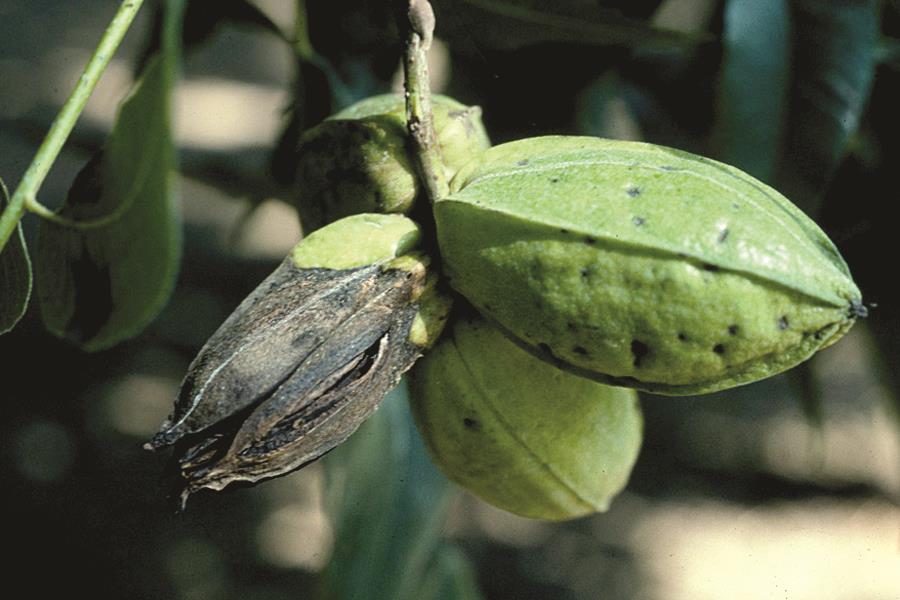Disease Gallery
Disease Details
Anthracnose
Glomerella cingulata
This disease can be severe in years with heavy rainfall. the fungus can infect a wide range of hosts. Infections typically occur on ripening and senescing tissues. Anthracnose is primarily a concern on pecan fruit; however, recently the fungus causing anthracnose has been implicated in a foliar disease complex called fungal leaf scorch. The distinction between fungal leaf scorch and foliar symptoms of pecan anthracnose is unclear.
The fungus overwinters in orchards on peduncles of the previous year's crop. Spore (conidia) release in early spring coincides with budbreak. Spores are spread by splashing rain. Spore production and spread are encouraged during periods of excessive rain and cool temperatures (~68 F). Infection usually occurs during early stages of fruit development. Stresses such as drought, tree crowding, heavy crop load, insect infestations can accelerate the life cycle of the pathogen resulting in rapid and severe disease development.
Shiny, dark brown, sunken lesions develop on green pecan fruit during wet periods. Lesions can expand and eventually cover the entire fruit. During periods of excessive wetness, salmon-colored masses of spores may be visible on the lesions. Yield and quality are reduced when the fungus penetrates the shell and kernel. Decreased kernel size, fruit abortion, and sticktights can result from infections by the fungus.
